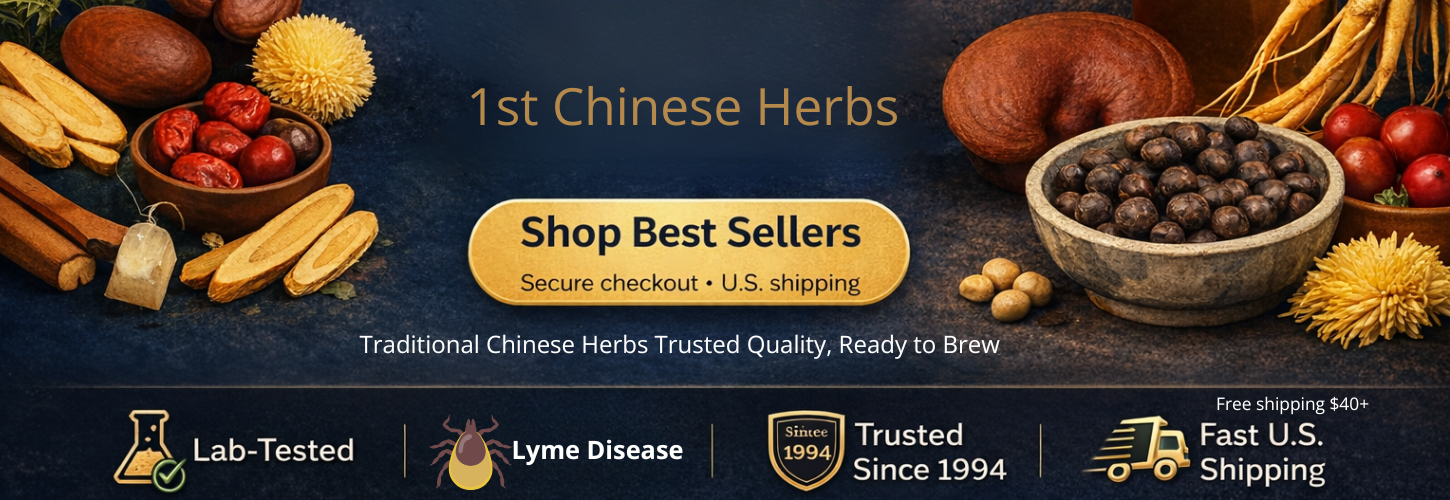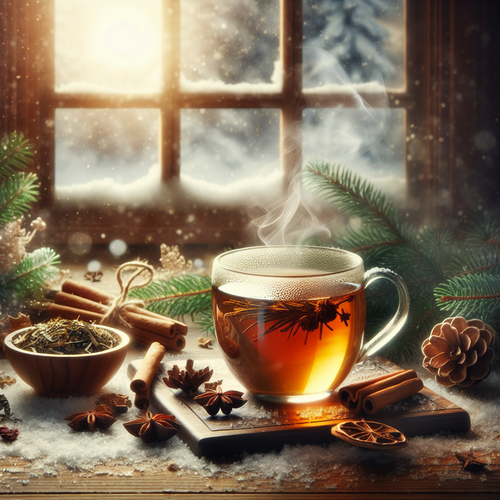Chinese Herbal Tea for Cold Season: What to Brew First
Posted by Education Team @1st Chinese Herbs on Sep 18th 2025
Chinese Herbal Teas for Cold Season: Top TCM Remedies for Throat & Lung Comfort
Last Updated: September 2025
Written by Sarah Johnson, M.S. in Holistic Healing
Quick Definition
Popular Chinese herbal teas for cold season wellness include Ban Lan Gen (Isatis Root), Yin Qiao San (Honeysuckle & Forsythia Formula), and Luo Han Guo (Monk Fruit). Used for centuries in Traditional Chinese Medicine (TCM), these teas are enjoyed for their gentle, soothing support of the lungs, throat, and overall balance during cooler months.
Why Drink Chinese Herbal Tea in Cold Season?
As the weather turns cooler, scratchy throats, coughs, and seasonal discomforts become common. While over-the-counter remedies often provide short-term symptom relief, TCM emphasizes nourishing balance and resilience.
Chinese herbal teas are unique because they:
-
Combine multiple herbs into synergistic formulas.
-
Address both immediate discomfort and long-term balance.
-
Offer natural, warming rituals that comfort body and spirit during the cold season.
Top Chinese Herbal Teas for Cold Season
1. Ban Lan Gen Tea (Isatis Root)
-
Traditional Use: Taken at the first sign of throat tickle or seasonal exposure.
-
Taste: Bitter, earthy, cooling.
-
How to Brew: Simmer dried root slices or stir instant Ban Lan Gen granules into hot water.
-
Interesting Note: Used historically in epidemic prevention teas.
-
Expert Insight: “Ban Lan Gen is cherished for supporting throat comfort during seasonal changes,” notes Dr. Wei Chen, L.Ac.
2. Yin Qiao San (Honeysuckle & Forsythia Formula)
-
Traditional Use: A famous formula for early seasonal imbalance — scratchy throat, mild fever, or exposure to crowds.
-
Taste: Light, cooling, minty.
-
How to Brew: Traditionally a decoction, now also available as teapills or granules.
-
Cultural Note: Passed down for centuries as a first-defense formula in cold season.
-
User Experience: Many users say they notice a comforting effect when taken at the very first signs of imbalance.
3. Luo Han Guo Tea (Monk Fruit)
-
Traditional Use: Known for soothing throat dryness and nourishing the lungs.
-
Taste: Naturally very sweet, refreshing.
-
How to Brew: Break apart the dried fruit, steep in hot water until flavor develops.
-
Fun Fact: Nicknamed the “longevity fruit” in southern China, it was used by monks for voice and meditation clarity.
-
Modern Twist: Today it’s also popular worldwide as a zero-calorie sweetener.
Comparison at a Glance
| Herb/Formula | Taste | Best Time to Drink | Traditional Use | Notes |
|---|---|---|---|---|
| Ban Lan Gen | Bitter, earthy | At first throat tickle | Supports throat comfort | Best in instant granule form |
| Yin Qiao San | Light, minty | Early signs of imbalance | Classic wind-heat support | Works best if taken early |
| Luo Han Guo | Naturally sweet | Anytime, especially evening | Moistens throat & lungs | Also used as natural sweetener |
Quick Herbal Tea Recipe for Seasonal Wellness
Ingredients:
-
1 piece Luo Han Guo (broken into chunks)
-
6 g Ban Lan Gen granules
-
1 tsp Yin Qiao San granules
Instructions:
-
Place herbs into a teapot or mug.
-
Add hot water.
-
Steep for 1–5 minutes.
-
Strain and sip warm, 1–2 times daily during cold season.
Personal Reflection
The first winter that we moved here to Republic was a particularly harsh winter. (Or from what I understand now, I just wasn't used to these bitterly cold temperatures.) I turned to Ban Lan Gen tea every evening. The earthy bitterness, adding just a small amount of Luo Han Guo, became my ritual — a source of warmth and throat comfort after long, dry days. That simple habit deepened my appreciation for these remedies and their place in seasonal wellness.
 FAQs: Brewing, Safety & Storage
FAQs: Brewing, Safety & Storage
Q1: Can I mix these herbs with other teas?
Yes. Many people blend them with green tea, mint, or ginger. Just avoid combining formulas that have overlapping herbs unless guided by a practitioner.
Q2: When is the best time to drink these teas?
-
Ban Lan Gen: At the earliest sign of seasonal irritation.
-
Yin Qiao San: During the first 24–48 hours of imbalance.
-
Luo Han Guo: Anytime for throat comfort, often in the evening.
Q3: How should I store these herbs?
Keep herbs in airtight glass jars, away from light, moisture, and heat. Luo Han Guo fruit is best stored whole until use.
Q4: Are there any side effects?
Generally safe when prepared correctly. Consult a healthcare provider if pregnant, nursing, or taking medications.
Q5: How do I know I’m buying quality herbs?
Look for GMP-certified, lab-tested suppliers. Trusted vendors ensure authenticity, safety, and freshness.
Brewing Guide: Chinese Herbal Teas
| Tea / Herb | Amount | Water | Temperature | Time | Notes |
|---|---|---|---|---|---|
| Ban Lan Gen (Isatis Root) | 9–15 g dried slices OR 1–2 tsp granules | 3 cups | Boiling (212°F / 100°C) | Simmer 15–20 min (slices) OR stir granules in hot water | Slightly bitter; often blended with Luo Han Guo for taste |
| Yin Qiao San (Honeysuckle & Forsythia Formula) | 1 packet granules OR 1–2 tsp powder | 1 cup | Hot (185–200°F / 85–93°C) | Steep 5–10 min | Works best at the first sign of seasonal imbalance |
| Luo Han Guo (Monk Fruit) | 1 dried fruit (broken into quarters) | 3–4 cups | Boiling (212°F / 100°C) | Steep 10–15 min | Naturally very sweet; can sweeten Ban Lan Gen tea |
| General Herbal Decoction | 9–15 g dried herbs | 3 cups | Boiling | Simmer 20–30 min | Strain before drinking; drink warm |
Seasonal Wellness in TCM
In TCM, autumn and winter are times to protect Lung Qi and build resilience. Along with herbal teas:
-
Eat warming foods (soups, congees, root vegetables).
(See our recipe page) -
Avoid excessive cold or raw foods.
-
Rest well to support immune balance.
Join the Community
For recipes, seasonal wellness tips, and herbal insights:


